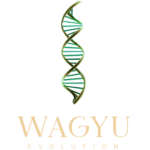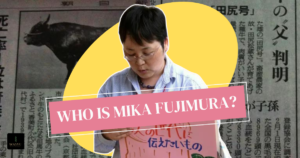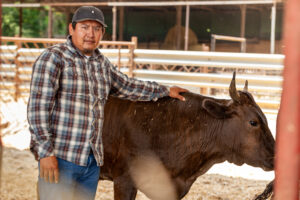The History of Takeda Farm
Mr. Takeda was born in West Sakhalin, where his father worked in civil engineering and construction. His family also owned cultivated land where his brother raised dairy cattle. After World War II ended, Mr. Takeda worked with his brother and dreamed of establishing a beef cattle farm in Siberia, with the aspiration to ship the finished cattle to Japan by ship.
New beginnings
In November 1947, Mr. Takeda migrated from Sakhalin and settled as a fisherman in East Hidaka, Hokkaido, in the spring of 1948. After the war, Shogo Takeda, the founder of Takeda Farm, transitioned to dairy farming. He was actively involved in running a dairy farm and working as a livestock technical instructor in Shiraoi Town, Hokkaido. Recognizing the decline in demand for military horses, Shiraoi Town sought a new industry, ultimately introducing Wagyu Cattle from Shimane Prefecture. Wagyu beef first arrived in Hokkaido in 1952. Shogo Takeda was captivated by its quality and beauty. He extensively studied Wagyu breeding techniques in Shimane and Hyogo prefectures, laying the foundation for Wagyu to thrive in Shiraoi Town.
Takeda Farm
Established in 1954, Takeda Farm engages in the comprehensive production of Wagyu beef, encompassing the stages of breeding, rearing, exporting, and selling. When the farm was first established, it only had two wagyu cows. Today, it raises over 400 cows and ships about 100 of them. To closely monitor the beef’s quality and improve breeding management and feed formulation. Takeda Farm opened its butcher shop and restaurant “Ushi no Sato” in 1984. It gets its beef directly from the farm and specializes in beef hamburgers and slices for sukiyaki, which are overwhelmingly popular at restaurants, shops, and even product exhibitions in Hokkaido.
Evolution of Breeding Strategy
Over 70 years, Shogo Takeda meticulously refined his breeding approach to maximize carcass quality and economic performance. Shogo Takeda’s breeding method for Wagyu cattle is all about balance. Instead of just focusing on marbling, he recommends a four-stage rotation that considers frame size, milk production, and calf-raising ability. By breeding cows from large-framed sires to marbling sires, and vice versa, future generations inherit the best of both worlds: good size and excellent marbling.
The model organizes sires according to their respective strengths
- Frame sires
- Marbling sires
The fundamental idea behind rotational mating is the alternating employment of sire types:
- Marbling sires are bred to cows sired by frame sires.
- Cows bred to frame sires are those sired by marbling sires.



